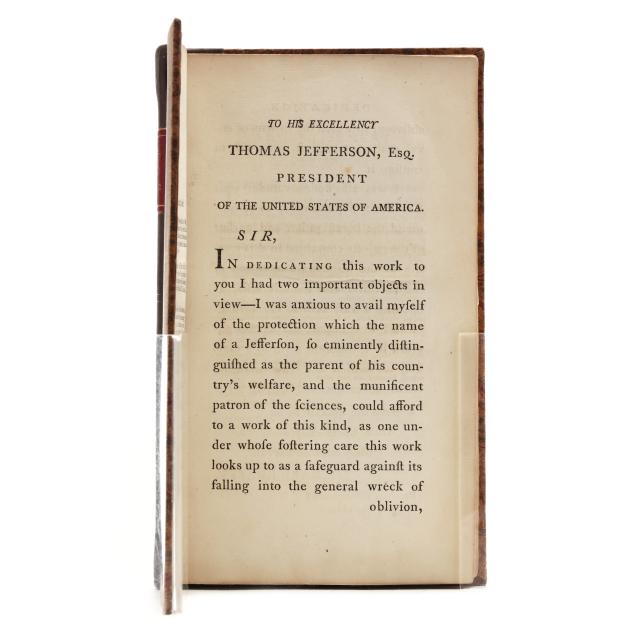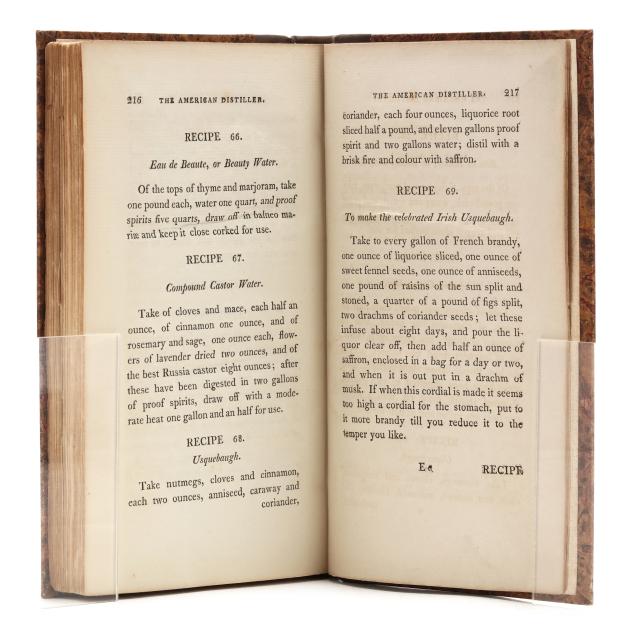
Lot 5006
Scarce First Edition of Krafft's The American Distiller
Lot Details & Additional Photographs
8 1/2 x 5 1/8 in.
Michael Krafft of Bristol, Pennsylvania received a patent for still construction in October 1801. His still designs, "which have met with universal and unbounded approbation and success," are described in his book, along with information on fermentation, malts, improving spirits, and more (advertisement, p. [5]). There are also nearly (40) pages of recipes for drinks such as angelica water, wormwood water (absinthe), plague water, pennyroyal water, and of course, usquebaugh (whiskey). Krafft wrote the dedication to Jefferson, "the munificent patron of the sciences," in part to "avail myself of the protection which the name of a Jefferson . . . could afford to a work of this kind" (advertisement, p. [5]). Sabin calls this "One of the earliest works of its class" (vol. 9, p. 548). A rare and fascinating early American book on distilling, and especially scarce at auction.
Only minor wear to boards with light creasing to joints and slight rubbing to gilt on spine and one corner; light grime on paste-downs, endpapers with browned edges, occasional fraying, chipping, or small tears, first and last with unattractive repairs, mostly at inner margin, and first with ownership writing; second plate with two edges frayed/chipped and reinforced on verso, first plate near pristine; stain at fore-edge impacting several leaves at outer margin; occasional frayed edge, corner chip, or small mark or tear, one page with pin hole; pages mostly lightly toned with rare spot of foxing and expected offsetting; damp staining is somewhat common though fairly faint, with many pages quite clean, crisp, and bright. A good to very good copy.










